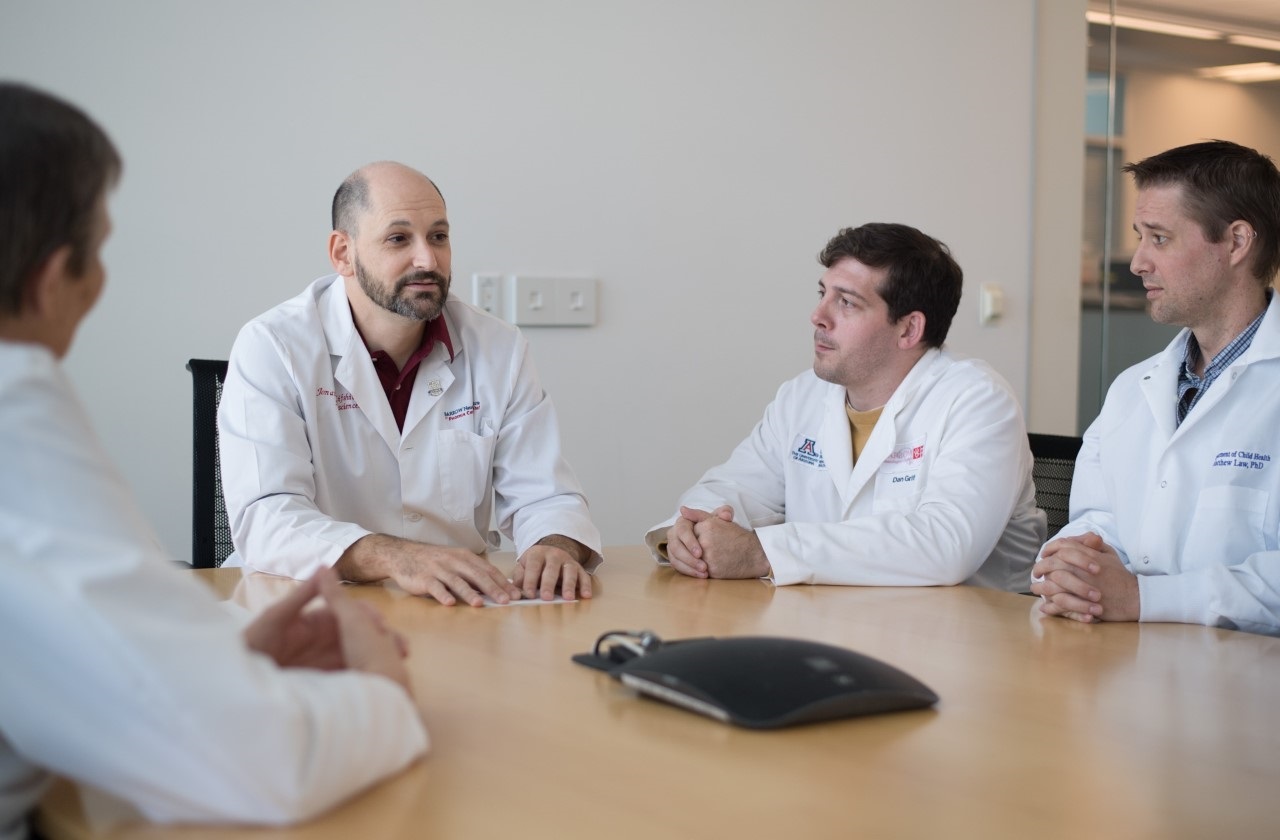
U of A-TGen Led Team Identifies New Biomarkers to Diagnose and Monitor Brain Injuries

A scientific team led by the University of Arizona and the Translational Genomics Research Institute (TGen), an affiliate of City of Hope, identified a robust set of biomarkers through proteomics and metabolomic analysis that could help guide treatment for tens of millions of patients who each year sustain brain injuries, potentially preventing severe long-term disabilities.
The team’s findings were reported in a study published in the Nature journal: Scientific Reports.
An estimated 69 million people worldwide annually sustain traumatic brain injury (TBI). That includes at least 3 million in the U.S. — resulting in nearly 288,000 hospitalizations, 56,800 deaths and more than 90,000 with permanent disabilities.
One of the practical applications of the study was to show the effectiveness of a treatment for brain injuries known as Remote Ischemic Conditioning (RIC). RIC involves, for example, using a tourniquet to restrict, then release, the flow of blood in one of the head-injury patient’s arms or legs. Scientists still don’t know why, but circulating molecules in the bloodstream are produced that could help the brain minimize or repair the injury through this seemingly unrelated technique of on-again, off-again flow of oxygen and nutrients to a patient’s limb.
“The molecules released by alternately restricting and releasing the blood flow seem to have a neuro-protective effect,” said Patrick Pirrotte, PhD, director of TGen’s Collaborative Center for Translational Mass Spectrometry and one of the study’s senior authors.
Using mice models and TGen’s state-of-the-art mass spectrometry facility to analyze proteins and metabolites, Dr. Pirrotte’s team identified biomarkers that showed the effectiveness of RIC, and additional biomarkers that could be used to measure the presence of the injury.
Premature return to normal or strenuous activities can worsen the (TBI) condition and induce chronic health-related issues, the study says, further exacerbating the onset of neurodegenerative diseases.
“The biomarkers we identified allow us to measure the extent of the injury, and monitor RIC-aided recovery from brain injury,” said Khyati Pathak, PhD, a member of Dr. Pirrotte’s team and one of the study’s authors.
The newly-identified biomarkers can provide a more exacting, molecular-level diagnosis of TBI.
“Traumatic brain injury, particularly in its less severe form, may not seemingly require hospitalization or an emergency room visit,” said Jonathan Lifshitz, PhD, director of the U of A’s Translational Neurotrauma Research Program: a joint venture between the U of A College of Medicine – Phoenix; a branch of Barrow Neurological Institute at Phoenix Children’s Hospital; and the Phoenix VA Health Care System.
“For millions of individuals, there often is no health care access immediately after TBI events, whether it be organized sports, recreational activities, occupational hazards, military service or domestic violence,” said Dr. Lifshitz, one of the study’s senior authors.
The use of RIC — the alternating restriction and release of blood flow to an arm or leg — has been shown in clinical studies to be effective in other emergency medical situations, including cardiac arrest, organ transplantation and lung injury.
“RIC is an easy to teach, practical intervention for a brain injury outside of the hospital setting. It allows for immediate care to the patient with the intent to reduce brain injury pathology,” said Maha Saber, PhD, who is affiliated with Barrow and U of A and is the study’s lead author.
This research study — Proteomic analysis identifies plasma correlates of remote ischemic conditioning in the context of experimental traumatic brain injury — was funded by grants from the National Institutes of Health (NIH-R21-NS096515, F31-NS090921, and T32-AG044402).
Story by: Steve Yozwiak, a senior science writer at TGen.
About the College
Founded in 2007, the University of Arizona College of Medicine – Phoenix inspires and trains exemplary physicians, scientists and leaders to advance its core missions in education, research, clinical care and service to communities across Arizona. The college’s strength lies in our collaborations and partnerships with clinical affiliates, community organizations and industry sponsors. With our primary affiliate, Banner Health, we are recognized as the premier academic medical center in Phoenix. As an anchor institution of the Phoenix Bioscience Core, the college is home to signature research programs in neurosciences, cardiopulmonary diseases, immunology, informatics and metabolism. These focus areas uniquely position us to drive biomedical research and bolster economic development in the region.
As an urban institution with strong roots in rural and tribal health, the college has graduated more than 1,000 physicians and matriculates 130 students each year. Greater than 60% of matriculating students are from Arizona and many continue training at our GME sponsored residency programs, ultimately pursuing local academic and community-based opportunities. While our traditional four-year program continues to thrive, we will launch our recently approved accelerated three-year medical student curriculum with exclusive focus on primary care. This program is designed to further enhance workforce retention needs across Arizona.
The college has embarked on our strategic plan for 2025 to 2030. Learn more.